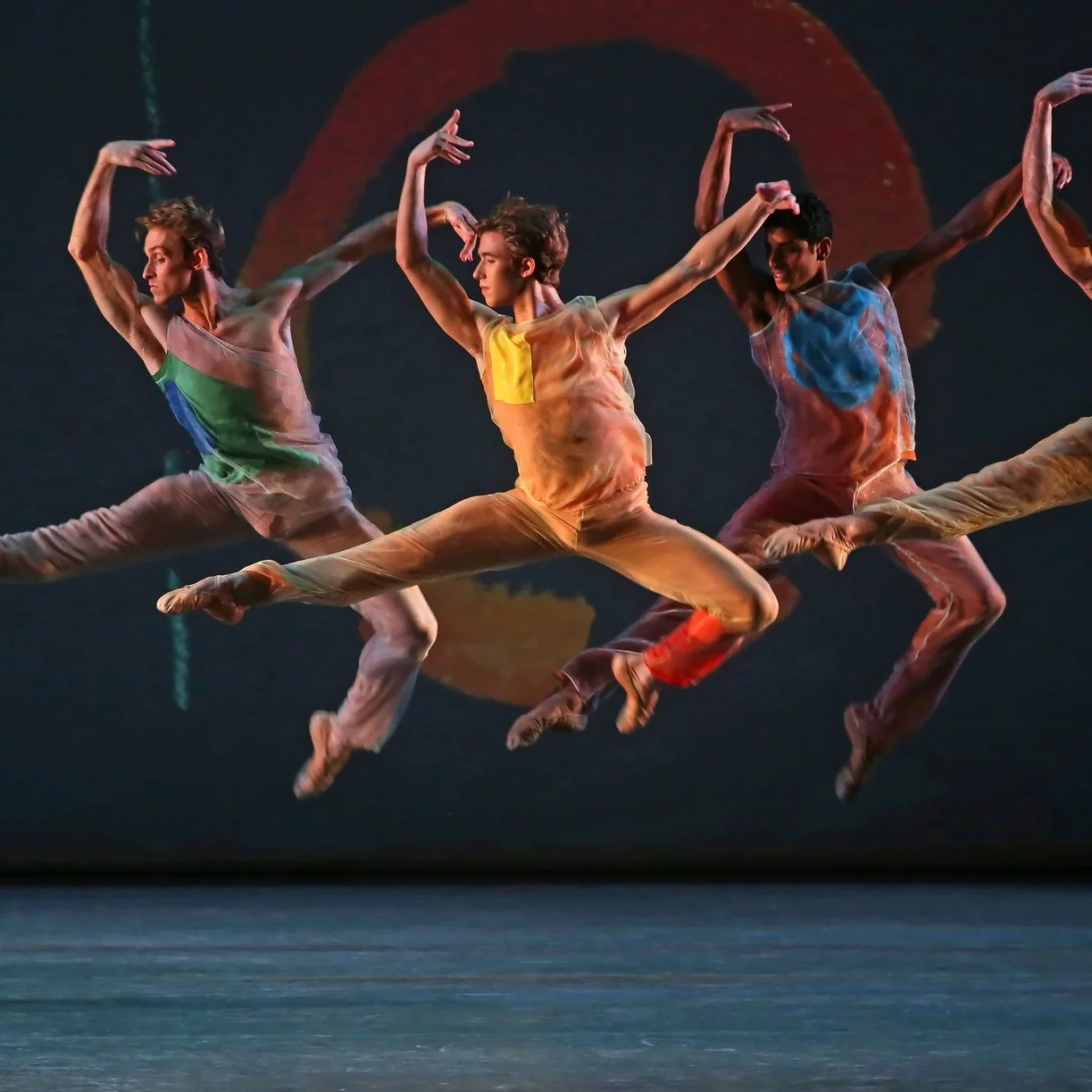21st Century Choreographers, I: Looking Ahead with NYCB's Spring Season
There was palpable energy in the audience before Tuesday night’s opening of the spring season, the first New York performances of New York City Ballet under the tenure of Stafford and Whelan, and after the performance (Alexei Ratmansky’s “Pictures at an Exhibition,” Mauro Bigonzetti’s “Oltremare,” Justin Peck’s “Rodeo: Four Dance Episodes”), the excitement felt justified.
Adrian Danchig-Waring, Joseph Gordon, Amar Ramasar, and Tyler Angle (2014) © Andrea Mohin/New York Times
Ratmansky’s use of Mussorgsky’s “Pictures at an Exhibition”—a piece the composer wrote after attending an exhibition of work by his friend Viktor Hartmann—carries the audience through the ballet with an edge-of-seat anticipation, enabling an intimate engagement with the characters on stage. Musically, the thematic “Promenade” represents the visitor (originally Mussorgsky himself) walking through the gallery, with the various movements referencing the various works on view. In the ballet, the dancers become one with historic and artistic influences—Kandinsky, Mussorgsky, Hartmann, Ratmansky, each other—in a marvelous sort of ekphrasis, coming together to pull apart the contained world embodied by Kandinsky’s concentric circles. Standout performers include Indiana Woodward, boldly stepping in for the injured Tiler Peck; the confident, energetic Georgina Pazcougin; Joseph Gordon and Tyler Angle, in an intimate and haunting section of partnering; and Sterling Hyltin, who dances the piece with lightness and authority.
Tyler Angle and Maria Kowroski in Mauro Bigonzetti’s “Oltremare” © Paul Kolnik
Mauro Bigonzetti’s “Oltremare” is not a natural fit in NYCB’s repertoire, and though it has been performed for the last three years (perhaps due to the current political climate), this was the first time I’d seen it. The immigration story is clear, but the elements of Bigonzetti’s work, like the upside-down, contorted partnering that worked so well in “In Vento,” felt out of place in the piece’s 19th-century bloomers and suspenders. Nonetheless, Brittany Pollack proved a strong substitute for Tiler Peck, and Megan Lecrone approached her sections with an uncharacteristic humanism. Maria Kowroski stunningly revisited the role she originated, as did Andrew Veyette, making an energetic return from his absence from the stage.
Russell Janzen and Sara Mearns in Justin Peck’s “Rodeo: Four Dance Episodes” © Andrea Mohin/New York Times
“Rodeo: Four Dance Episodes” is among Justin Peck’s most enduring works, marked by iconic music, profound tenderness contrasting boyish exuberance, and provocative formations. The music begs to be danced to: 15 men and a single woman (Sara Mearns) answer its call. Peck’s reimagination of the Agnes de Mille choreography and Copland score is at once vibrant and poignant, bookended by spirited opening and closing numbers utilizing the entire cast. The quintet, danced by five men, best exemplifies Peck’s talent. The support, collaboration, and gentleness displayed by these dancers (on Tuesday, Devin Alberda, Daniel Applebaum, Jonathan Fahoury, Kennard Henson, and Andrew Scordato) is not only notable within ballet’s history, but also in this moment at City Ballet.
Just last week, AGMA mandated City Ballet reinstate Amar Ramasar and Zachary Catazaro, both suspended, then dismissed, following the suit filed against the company this fall. In looking for ways to heal from the past year’s challenges, NYCB would be well suited to look at Peck’s “Corral Nocturne” for the ways in which the five men navigate by using one another for support and guidance, a tone Jonathan Fahoury embodied beautifully. The partnership between Mearns and Russell Janzen serves as an astute example, too: their pas de deux is playful and reciprocal, and illustrates the rapport, trust, and respect fundamental not only to good partnering, but to any relationship, independent of the art form.





